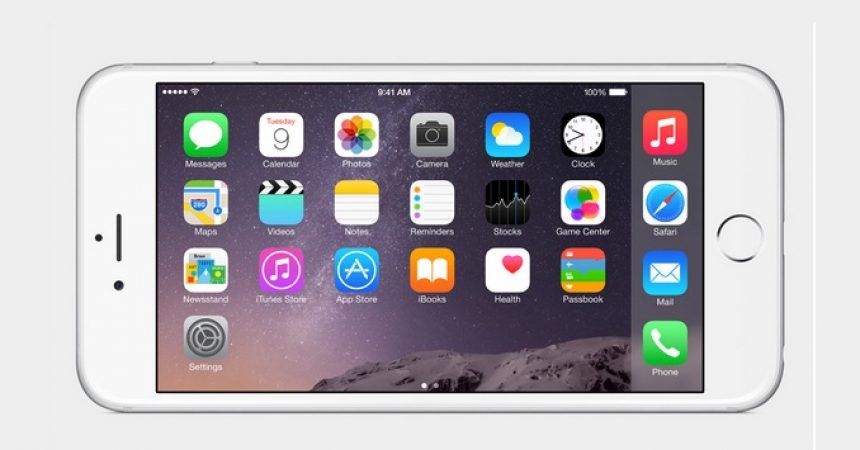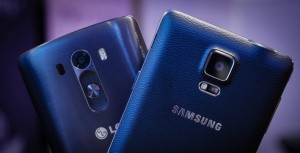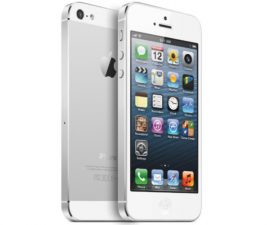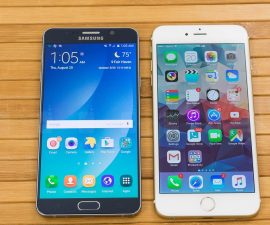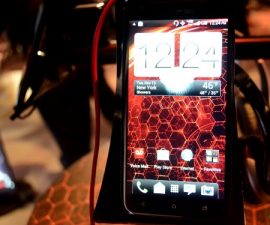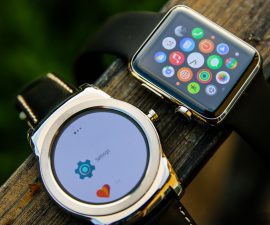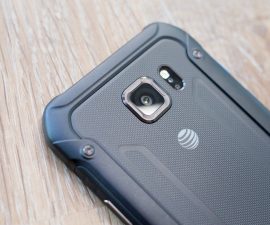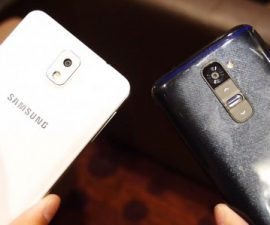The iPhone 6 And iPhone 6 Plus Against Android Review
While the month of September is far from over, we’re already seen several big announcements on the next generation of smartphones. Last week alone announcements were released about the Xperia Z3, the Note 4, a new Moto X and the two newest member of the Apple family, the iPhone 6 and the 6 Plus. While the Android run devices are different from the iOS devices, we would like to look at how the newest iPhones compare to the newest Android devices.
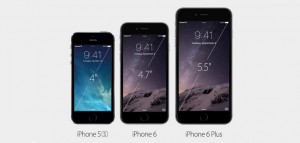
Display
- iPhone 6: 4.7 inch LCD, 1224 x 750 resolution, 326 ppi
- iPhone 6 Plus: 5.5 inch LCD, 1080 x 1920 resolution, 401 ppi
- Note 4 : 5.7 inch AMOLED, 2560×1440 resolution, 515 ppi
- Galaxy S5: 5.1 inch AMOLED, 1920×1080 resolution, 432 ppi
- LG G3 : 5.5 inch LCD, 2560×1440 resolution, 538 ppi
- HTC One M8: 5 inch LCD, 1920×1080 resolution, 441 ppi
- New Moto X: 5.2 inch AMOLED, 1080 x 1920 resolution, 424 ppi
- Sony Xperia Z3: 5.2 inch LCD, 1920×1080 resolution, 424 ppi
- Sony Xperia Z3 Compact: 2 inch LCD, 1920×1080 resolution,424 ppi
- OnePlus One: 5.5 inch LTPS LCD, 1080 x 1920 resolution, 401 ppi
- LG Nexus 5: 95 inch LCD,1920×1080 resolution, 445 ppi
Observations:
- Apple still doesn’t believe in large displays, but we now live in an age is huge screens with at least 1080p resolutions.
- The Note 4 and LG G3 have already moved into QHD.
- While the iPhone still isn’t in the same display league as its competitors, it is closing the gap.
- The 4.7 inch display on the iPhone 6 is a jump of 7 inches from its predecessor. This is also just a little smaller than the 5-5.2 inches found in the Android flagships
- When it comes to resolution, the iPhone 6 has the least impressive of the flagships listed above. It only has about 326 ppi (which the iPhone 5S also had) compared to the Android flagship average of 401-538 ppi.
- The iPhone 6 plus is closer resolution wise to the Android devices.
CPU
- iPhone 6: A8 CPU, 1400 MHz, 2 CPU cores, 1 GB of RAM
- iPhone 6 Plus: A8, 1400 MHz, 2 CPU cores, 1 GB of RAM
- Samsung Galaxy Note 4: Snapdragon 805, 2700 MHz , 4 CPU cores, Adreno 420 GPU, 3 GB of RAM.
- Samsung Galaxy S5: Snapdragon 801, 2500 MHz, 4 CPU cores, Adreno 330 GPU, 2 GB of RAM
- LG G3: Snapdragon 801, 2500 MHz, 4 CPU cores, Adreno 330, 2 or 3 GB of RAM
- HTC One (M8): Snapdragon 801, 2300 MHz, 4 CPU cores, Adreno 330, 2 or 3 GB of RAM
- New Moto X: Snapdragon 801, 2500 MHz, 4 CPU cores, Adreno 330, 2 or 3 GB of RAM
- Sony Xperia Z3: Snapdragon 801, 2500 MHz, 4 CPU cores, Adreno 330, 3 GB
- Sony Xperia Z3 Compact: Snapdragon 801, 2500 MHz, 4 CPU cores, Adreno 330. 3 GB of RAM
- OnePlus One: Snapdragon 801, 2500 MHz, 4 CPU cores, Adreno 330, 3 GB of RAM
- Nexus 5: Snapdragon 800, 2300 MHz, 4 CPU cores, Adreno 300, 2 GB of RAM
Observations
- On paper, it would seem that the Android devices outclass the iPhone’s with their quad and octa-cores as well as their RAM sizes in the 2-3 GB range.
- However, when we remember that Apple use an 64- bit processor, this gives it a bit of an edge.
- Also, Apple has always preferred to sit out spec wars and concentrate on optimizing their OS.
- Apple fans will argue the lesser specs of the new iPhones will work quite nicely with the iOS and that’s what matters.
- Objectively, Apple did optimize their OS to work with these lesser specs, but, we still feel that a stronger CPU, GPU and bigger RAM make a difference.
Camera
- iPhone 6: 8 MP rear camera, 30/60 1080p video fps
- iPhone 6 Plus:8 MP with optical image stabilization, 30/60 1080p video fps
- Samsung Note 4: 16 MP rear camera, 3.4 MP front camera, 30 4k video fps, 60 1080p video fps
- LG G3: 13 MP rear camera, 2.1 MP front camera, 60 1080p video fps
- HTC One (M8): 4 MP rear camera, 5 MP front camera, 30 1080p video fps
- New Moto X: 13 MP rear camera, 2 MP front camera
- Nexus 5: 8 MP rear camera,2.1 MP front camera, 30 1080p video fps
- Samsung Galaxy S5: 16 MP rear camera, 2 MP front camera, 30 4K video fps, 60 1080p video fps
- Sony Xperia Z3: 20.7 MP rear camera, 2.2 MP front camera, 30 4K video fps, 60 1080p video fps
- Sony Xperia Z3 compact: 7 MP rear camera, 2.2 MP front camera, 30 4K video fps, 60 1080p video fps
Observations
- On paper the iPhones seem out matched. However, Apple usually equips their iPhones with camera capable of decent images even if their sensor sizes are not as high as Android flagships.
- Apple will also be introducing a new sensor for the 6 and 6 Plus.
- The 6 Plus will also have OIS technology.

Storage, Special Features, Etc.
Storage
- iPhone 6: 16/64/128 GB variants with no microSD
- iPhone 6 Plus: 16/64/128 GB variants with no micro SD
- Samsung Galaxy Note 4: 32GB with microSD
- LG G3 :16GB (32GB option?) with microSD
- HTC One (M8): 32GB with microSD
- New Moto X: 16 or 32GB variants with no microSD
- Nexus 5: 32GB with no micro SD
- Samsung Galaxy S5: 32GB with microSD
- Sony Xperia Z3: 16 or 32GB variants with microSD
- Sony Xperia Z3 Compact: 16GB with microSD
Fingerprint scanner
- iPhone 6: Yes
- iPhone 6 Plus: Yes
- Samsung Galaxy Note 4: Yes
- LG G3: No
- HTC One (M8): No
- New Moto X: No
- Nexus 5: No
- Samsung Galaxy S5: Yes
- Sony Xperia Z3: Yes
- Sony Xperia Z3 Compact: Yes
Water Resistant
- iPhone 6: No
- iPhone 6 Plus: No
- Samsung Galaxy Note 4: No
- LG G3: No
- HTC One (M8): No
- New Moto X: No
- Nexus 5: No
- Samsung Galaxy S5: Yes
- Sony Xperia Z3: Yes
- Sony Xperia Z3 Compact: Yes
Dimensions
- iPhone 6: 137.5 x 67 x 7.1 mm, weighs 113g
- iPhone 6 Plus: 7.1mm thin
- Samsung Galaxy Note 4: 153.5 x 78.6 x 8.5 mm weighs 176g
- LG G3: 146.3 x 74.6 x 8.9 mm weights 151g
- HTC One (M8): 146.4 x 70.6 x 9.4 mm, weighs 160g
- New Moto X: 140.8 x 72.4 x 10 mm, weighs 144g
- Nexus 5: 137.9 x 69.2 x 8.6 mm, weighs 130g
- Samsung Galaxy S5: 142 x 72.5 x 8.1 mm, 145g
- Sony Xperia Z3: 146 x 72 x 7.3 mm weighs152g
- Sony Xperia Z3 Compact: 3 x 64.9 x 8.6 mm weighs 129g
Observations
- One feature Apple will have that none of the Android devices will is NFC. They have a new “Apple Pay” system with NFC technology.
- Other than that the features of the Apple devices and the Android devices are around the same.
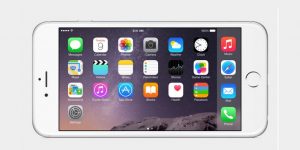
Has Apple caught up?
Until we actually hold an iPhone 6 or 6 Plus, we can only judge based on the specs on the paper. As it currently stands, the new iPhones have caught up in area such as screen size and by adding NFC. This is definitely a step in the right direction for Apple.
What do you think about the specs for the iPhone 6 and iPhone 6 Plus?
JR
[embedyt] https://www.youtube.com/watch?v=tALdWo2ymWY[/embedyt]
